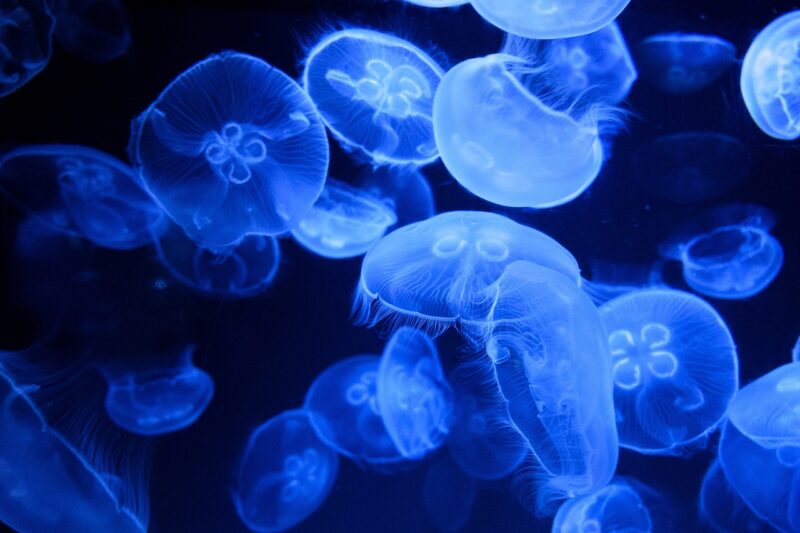The Evolution of Marine Life: How Creatures Have Adapted to Life in the Ocean
November 14, 2024

The ocean, covering over 70% of the Earth’s surface, is home to an astounding variety of life. From the tiniest plankton to the largest whales, marine life has undergone an incredible evolutionary journey, adapting to the complexities of its aquatic environment. This article delves into the evolution of marine life, exploring how creatures have thrived in various ocean habitats and highlighting the remarkable adaptations that have enabled them to survive.
1. The Origins of Marine Life
Marine life traces its roots to the earliest forms of life on Earth. The first organisms, likely simple single-celled prokaryotes, appeared about 3.5 billion years ago in the primordial oceans. These ancient microbes played a crucial role in shaping the planet’s atmosphere, slowly increasing oxygen levels through photosynthesis.
As time progressed, multicellular life began to emerge. By the Cambrian period (around 541 million years ago), a dramatic increase in biodiversity known as the “Cambrian Explosion” occurred. This event marked the appearance of many major groups of animals, including the ancestors of most modern marine animals.
2. Key Phyla and Their Adaptations
Marine life can be broadly classified into several major phyla, each exhibiting unique adaptations to thrive in their environments. Here, we will explore some of the key phyla and their evolutionary traits:
a. Mollusca
Mollusks, encompassing creatures like snails, clams, and octopuses, are characterized by their soft bodies and often a hard shell. Their adaptations include:
- Protective Shells: Many mollusks have evolved hard shells for protection against predators and harsh environmental conditions.
- Camouflage: Cephalopods like octopuses can change color and texture to blend into their surroundings, avoiding detection.
- Advanced Nervous Systems: Cephalopods also boast complex brains and are known for their problem-solving abilities and intelligence.
b. Arthropoda
The phylum Arthropoda includes crabs, shrimp, and lobsters. Their adaptations include:
- Exoskeletons: A hard outer shell protects against physical damage and water loss, allowing these creatures to inhabit diverse environments.
- Jointed Appendages: Jointed limbs enable arthropods to move efficiently and exploit their surroundings for food and shelter.
- Sensory Structures: Advanced eyes and antennae help them detect changes in their environment, crucial for finding food or avoiding predators.
c. Chordata
The phylum Chordata includes fish, mammals, and reptiles. Key adaptations include:
- Gills and Lungs: Fish possess gills for extracting oxygen from water, while marine mammals have lungs and must surface to breathe air, showcasing different adaptations to their environments.
- Streamlined Bodies: Many marine animals, such as dolphins and sharks, have evolved streamlined shapes that minimize resistance when swimming, enhancing their hunting or evasion skills.
- Social Structures: Many species, including dolphins and certain fish, have developed complex social behaviors that aid in hunting and reproduction.
3. Adaptations to Extreme Environments
Marine life also faces extreme conditions, from deep-sea trenches to freezing polar waters. Here, we explore how creatures adapt:
a. Deep-Sea Adaptations
In the dark depths of the ocean, organisms have adapted in extraordinary ways:
- Bioluminescence: Many deep-sea creatures, like anglerfish, have developed the ability to produce light, aiding in attracting prey and communication.
- Increased Pressure Tolerance: Some species possess specialized structures to withstand the enormous pressure found in deep-sea environments.
- Slow Metabolism: Many deep-sea species have slow metabolic rates, allowing them to survive on limited food resources.
b. Polar Adaptations
In the frozen waters of polar regions, marine life exhibits unique adaptations:
- Insulation: Many creatures, such as seals and whales, have a thick layer of blubber that provides insulation against the cold.
- Specialized Blood Proteins: Some fish (like Antarctic icefish) have evolved antifreeze proteins in their blood, preventing it from freezing in icy waters.
- Seasonal Migration: Many species, like whales, migrate to warmer waters during colder seasons to reproduce, showcasing their adaptability to changing environmental conditions.
4. The Role of Evolutionary Pressures
Evolutionary pressures, such as predation, competition, and environmental changes, have shaped marine life over millions of years. Key aspects include:
a. Predation and Defense Mechanisms
Predation has driven the evolution of defense mechanisms in marine organisms:
- Camouflage and Mimicry: Many species use color patterns to blend with their environments, while others mimic more dangerous organisms to deter predators.
- Spines and Toxins: Creatures like the pufferfish use spines and lethal toxins as deterrents against predators, showcasing the diversity of survival strategies.
b. Competition for Resources
Competition has led to the development of unique feeding strategies and behaviors:
- Specialized Feeding Mechanisms: Certain fish have adapted specialized mouths to exploit different feeding niches, allowing coexistence without direct competition.
- Symbiotic Relationships: Many marine species engage in symbiosis, such as clownfish and anemones, benefiting mutually while minimizing competition.
5. The Future of Marine Evolution
As we look toward the future, ongoing climate change and human activities pose significant threats to marine life.
Key areas of concern include:
- Ocean Acidification: The increase in CO2 levels is leading to ocean acidification, impacting calcifying creatures like corals and shellfish.
- Overfishing and Habitat Destruction: Unsustainable fishing practices and habitat loss can disrupt the delicate balance of marine ecosystems.
- Climate Change Impacts: Rising sea temperatures and changing currents could drive shifts in species distribution, influencing evolutionary trajectories.
Despite these challenges, marine organisms have shown remarkable resilience and adaptability throughout history. As new evolutionary pressures emerge, the ocean will continue to be a fascinating arena for the evolution of life.
Conclusion
The evolution of marine life is a testament to the resilience, creativity, and astonishing adaptability of nature. From the depths of the ocean to the sunlit surface, marine creatures have developed an incredible array of adaptations, ensuring survival in diverse environments. As we face new challenges, understanding these evolutionary principles will be essential for the conservation of our oceans and the protection of the rich biodiversity they hold.
Whether it’s the vibrant coral reefs teeming with life or the vast schools of fish that propel through the water, the evolution of marine life reflects the ever-changing story of our planet, demonstrating that the ocean is not just a habitat, but a dynamic ecosystem shaping life as we know it.








